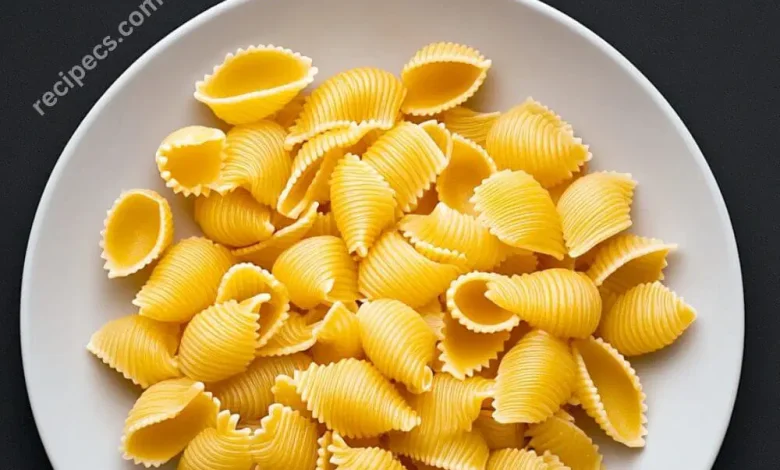8 Brilliant Reasons to Never Boil Pasta in Water Again

For eons, the ritual of boiling pasta in water has been a universal kitchen habit. However, what if I told you there’s a more exhilarating, flavorful, and resourceful approach to pasta cooking? With evolving culinary techniques, innovative methods emerge that not only conserve time and energy but also elevate the flavor of your dishes. Cooking pasta directly in sauces or alternative liquids can unlock layers of flavor while streamlining your culinary process. Ready to upend your pasta game? Here are eight compelling reasons why you should reconsider boiling pasta in plain water.
ADVERTISEMENT
1. Amplify Flavor by Cooking Pasta in Sauce
When pasta simmers directly in a rich sauce, it absorbs the nuanced layers of flavor, leading to a symphonic dish. Unlike the traditional method of boiling and tossing, this approach allows the pasta to become infused with the sauce from the outset, creating a more harmonious meal. This is especially transformative for dishes like spaghetti Bolognese or marinara, where every mouthful is an exquisite blend of ingredients, and the sauce feels inseparable from the pasta.
ADVERTISEMENT
How to implement: Use a wide-bottomed pan, combine your sauce base, and thin it with a touch of broth or water. Add the uncooked pasta, stirring regularly to avoid sticking, and incrementally add liquid until the pasta reaches the desired tenderness.
ADVERTISEMENT
2. Conserve Water and Energy
The conventional method of cooking pasta involves a considerable amount of boiling water, which squanders both time and resources. The wait for a rolling boil can seem endless, particularly for smaller portions. By opting to cook your pasta directly in sauces or broths, you conserve both water and energy. This eco-conscious method minimizes waste and reduces what goes down the drain.
How to implement: You only need enough liquid to submerge the pasta. As it simmers, the liquid naturally reduces, thus consuming less energy than traditional boiling.
3. Create Luxurious Texture with a Risotto-Style Technique
Using a risotto-inspired method to cook pasta unlocks a velvety, luxurious texture that is difficult to achieve with the typical boiling technique. By gradually adding liquid while frequently stirring, the pasta’s starches are released, producing a luscious, creamy consistency. You won’t even need to add cream or cheese—the creaminess comes from the pasta itself.
How to implement: Start by gently sautéing the pasta in olive oil or butter. Gradually add broth or other liquid in small quantities, stirring continuously. As the pasta drinks in the liquid, it releases starches, which enrich the dish.
4. Infuse More Nutrients by Cooking in Broth
Instead of boiling pasta in plain, flavorless water and then discarding it, cook it in nutrient-packed broths. Whether it’s vegetable, chicken, or beef broth, the pasta soaks up both the flavors and the nutrients, making your meal more wholesome and flavorful. This technique is especially useful for simple yet nourishing dishes that don’t rely on heavy sauces for their appeal.
How to implement: Replace water with your preferred broth, simmer the pasta until tender, and enjoy the deepened flavor without additional seasoning.
5. Reduce Cleanup by Minimizing Cookware
Traditional pasta-making involves two separate cooking vessels—one for boiling and another for the sauce—leading to an abundance of dishes. Cooking the pasta directly in the sauce or broth streamlines the process, as only one pan is required, significantly reducing cleanup time. Fewer dishes mean less post-dinner stress.
How to implement: Select a deep pan or skillet that can accommodate both your pasta and sauce. Cook them together, and you’ll only need to clean one pan afterward.
6. Achieve Creaminess Without Dairy
If you adore creamy pasta but wish to avoid dairy, this method is your savior. By simmering pasta in non-dairy liquids such as vegetable broth, coconut milk, or almond milk, the pasta’s starch thickens the liquid, resulting in a creamy sauce without the need for dairy products like cream, butter, or cheese.
How to implement: Add a splash of coconut milk or almond milk to the pan alongside your pasta. Stir frequently as it simmers to create a naturally thick and creamy sauce, perfect for indulgent, dairy-free meals.
7. Accelerate the Cooking Process
A surprising benefit of cooking pasta in sauce or broth is the time-saving element. Since you work with a smaller volume of liquid, it heats up faster, and the pasta absorbs it more efficiently. This also eliminates the need for draining, further cutting down on cooking time.
How to implement: Bring your sauce or broth to a gentle simmer, add the uncooked pasta, and stir frequently to ensure even cooking. The pasta will become tender in less time than traditional boiling.
8. Expand Flavor with Creative Liquid Choices
Why settle for plain water when you can elevate your pasta by cooking it in something far more flavorful? Liquids such as wine, tomato juice, or coconut milk impart a new dimension to your dish. For instance, cooking pasta in wine yields a rich, aromatic base, while coconut milk adds a creamy texture with a hint of sweetness. Tomato juice offers a vibrant acidity, making it ideal for Mediterranean-inspired dishes. These alternatives invite you to experiment and create extraordinary, customized pasta dishes.
How to implement: Choose a liquid that complements the flavors of your dish. For seafood pasta, try simmering it in white wine. For an Asian-inspired dish, opt for coconut milk. Enhance the experience further by adding herbs and spices.
By abandoning the old practice of boiling pasta in plain water, you open the door to a world of culinary possibilities—more flavor, more nutrients, fewer dishes, and faster cooking times. Are you ready to transform the way you cook pasta forever?




